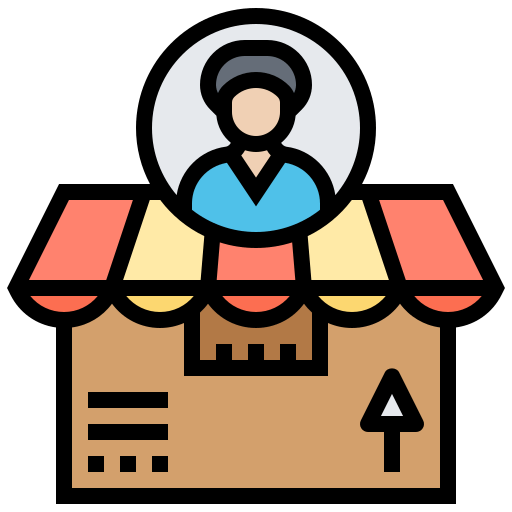A service marketplace is an online platform that connects service providers with customers. Service marketplaces help customers to find the services and businesses find new customers. Also, they assist businesses in managing appointments, payments, and reviews.
If you’re thinking of starting a service marketplace, there are a few things you need to know. In this blog post, we’ll go over what service marketplace platforms are and how you can start one of your own. We’ll also give some tips on how to set up your business. Moreover, we share what features to look for in a service marketplace platform. Read to learn everything you need to know about starting your service marketplace!
What is a service marketplace platform?
A service marketplace platform is an online ecosystem connecting service providers and consumers. This ecosystem centralizes the buying and selling of services. So, these platforms offer both parties an easier, faster way to interact.
For service providers, a marketplace offers access to a vast range of shoppers. This can translate into increased revenue opportunities.
As for consumers, they get access to more choices of service providers. Also, they receive access to competitive pricing options. This happens due to the expanded pool of service providers available on the platform.
A service marketplace platform can also provide extra features. They are payment processing, communication tools, analytics capabilities, customer reviews, and ratings. Also, they are the shared service availability calendars, automated email marketing campaigns, etc.
These features give providers and customers a better experience while they interact.
All in all, service marketplaces offer benefits for everyone involved in the process. Service providers can increase revenue potential. And consumers can seek more choices at better prices. Such marketplaces provide a secure environment. Here, business collaborators can come together for mutual benefit. Thus, the platform makes the service exchange process smoother for both parties.
In short, a service marketplace platform helps bring order and considerable cost savings. It helps avoid the chaos of traditional services exchange through technology. This is a powerful capability at hand. So, it’s no wonder why many businesses have already embraced this concept. They made significant use of it in their digital transformation journey. And only time will tell if this new trend will become business as usual when it comes to service exchange.
Types and examples of service marketplaces
Freelance
Freelance service marketplaces are professional marketplaces that focus on providing work-of-art professional services.
They allow businesses and individuals to find reliable, professional talent in an easy way. Also, they can be a good option for expanding an enterprise’s workforce in an efficient manner.
Examples of freelance service marketplace websites include Upwork and Fiverr. These sites provide access to thousands of freelancers who specialize in various skills. They are animation, web design, translation services, content writing, and app development. Also, freelancers can specialize in software development, accounting, and more.
Moreover, freelancing platforms assist professional specialists in getting connected with potential clients. So, specialists can offer their technical knowledge and experiences around the world.
All things considered, freelance service marketplaces are invaluable resources for many businesses. These platforms help to get professional services in a fast and cost-effective way.
E-learning
One more example of such a marketplace is the e-learning platform (Coursera). It is an intermediary between firms looking to train their employees and educational trainers.
By outsourcing the services and managing it through an online system, a business can access professional help. Yet, they don’t need to commit to long-term contracts or expensive hiring requirements.
Online learning platforms are becoming very popular. Why? Because people have come to recognize the value of professional development. It helps in business growth and success.
Experts suggest that professional services sites will continue to proliferate in the future. These platforms will benefit both businesses and service providers. We mean providers who are keen to make themselves more accessible. So, they want to achieve greater efficiency and cost savings.
Aggregator
An aggregator marketplace offers customers access to professional services from many vendors. Consumers can compare different service providers’ prices and offerings. Thus, they can find the best fit for them.
One example of a professional services marketplace is a home Handyman service aggregator. It allows customers to contract professional handypersons for repairs and other jobs.
Another example is a food delivery aggregator, FoodBoss. It enables customers to order from different restaurants without needing to visit them.
Professional services marketplaces offer immense convenience for both service providers and consumers alike. These marketplaces provide exposure for small businesses. These platforms simplify the process of finding customers. Also, consumers can avail of professional services at competitive rates.
On the whole, these platforms promote competition among professional service providers. But providers still meet consumer needs in one convenient place.
Approaches to building your online service marketplace
Custom or ready-made solutions
You can tailor custom solutions to fit the exact needs of the business. With custom services, you get a unique and convenient platform. Such a platform will meet specific user needs. As a rule, custom solutions are more expensive than ready-made solutions. But they provide better scalability and flexibility in customizing the marketplace. Customized solutions may also integrate with other platforms in a more efficient way. So businesses don’t have to worry about losing out on prospects due to compatibility issues.
Custom solutions are often the best option for building meaningful service marketplaces.
In contrast, you can create a website faster with a ready-made solution. Generally, the ready-made options cost less than custom ones. Yet, such services do offer less control over design and features.
Consider your long-term business goals when choosing between custom or ready-made options. Also, take into account upfront costs.
The chosen development approach will make all the difference between success and failure. Getting the decision right is key!
Select the best monetization model for your service platform
Let’s move on to how to monetize your service platform.
When creating a marketplace, pick the right monetization strategy for your business. You start your marketplace to get money and not as a charity project.
So, you should pick the best option for your service platform and apply it. Let’s consider the best monetization strategies many marketplaces use.
Subscription fee
For example: Service providers pay $10 per month for a subscription.
By choosing this business model, the merchants can set a subscription. So, they can use the extensive offer on the website. This offering can comprise enhanced software solutions or premium listings. It also may include services integrated with the marketplace. This fee is usually paid on a yearly or monthly basis.
Transaction fee
For example: Providers pay 5% of the transaction value.
This monetization model means for providers as they pay fees only when they offer a service. Without any payments in advance, providers are more likely to join your marketplace. The logic is quite simple. The more transactions your marketplace executes, the more revenue you bring in. So, the scalability of this monetization model is very high.
A transaction fee model is the main source of income for Airbnb, Fiverr, and others.
Listing fee
For example: Providers pay $15 for listing each service on your website.
Using this model, you charge the merchants for listing the services on your platform. This monetization model is not so popular compared to transaction or subscription fees. Yet, it can be a great income source.
Premium listings
For example: Providers pay $4 for a premium listing, and it places higher in the feed for a week.
You can charge providers if they aim to make their ads more visible to customers. The placement higher in search results generates more customer leads. Thus, providers will cover a more massive number of clients.
Featured ads
These ads are an excellent way for providers to promote their services. Also, they will get more visibility on your site.
Still, this marketplace monetization model is quite hoar. You should manage the amount and size of the paid offerings on your site. Also, many users annoy by listings. So, such a model may put them off your service site.
The only way is to make these offerings tailored and personalized and tailored. That is why this model stream works best for niche websites related to one specific field. In this case, any advertisement will be actual to many people.
Main steps when developing a service marketplace platform
Discovery Phase
Before beginning development, you need to understand the business needs and requirements. This phase includes identifying target customers and defining features of the platform. It also means researching existing competitors and outlining a plan to attract users.
UI/UX design
So, you identified the business objectives and features of the platform. What’s next? Focus on the user experience.
This stage includes defining the look and feel of the site. Designers create wireframes for each page. Engaging a UI UX design company at this stage can significantly enhance the user experience, ensuring your marketplace platform is intuitive and appealing to users. They design a consistent user interface across devices and map out customer journeys.
Development
At this stage, the actual development of the marketplace platform begins. This phase includes coding the front-end and back-end of the site. Then comes ensuring that the site performs well across different devices. You should also check any necessary third-party tools or APIs and test for bugs.
Testing and launch
Before launching the platform, a rigorous testing process should take place. This stage is vital to ensure that all features are functioning in the right way. Also, we should be confident that the user experience is satisfactory. Once you fix any final bugs, you can launch the platform!
Maintenance and support
Finally, after launch, it is vital to carry out regular maintenance and support. It means monitoring customer feedback and providing customer service. This stage also includes fixing any bugs or issues that may arise. Additionally, businesses should consider the implementation of new features or updates. It is vital to keep their platform competitive and relevant in the market.
All in all, developing an online service marketplace requires careful planning and execution. You should understand the needs of the business. Create a convenient interface, and carry out maintenance and support post-launch. Thus, you can be sure that your marketplace is set up for long-term success.
Criteria of successful marketplace development
To sum up, to make a lucrative service marketplace, you need to keep up the following statements:
- Your service platform is valuable
You should be sure your online service marketplace is valuable for providers and customers. Underline the key strengths of the site that engage each side to join to it.
- Your marketplace is convenient to use
To build your web solution easy to use, let users achieve the needed result with least actions.
- Your service marketplace is reliable
You need to consider how to create a secure and reliable platform for your users. For instance, add such functions as providers’ ratings, reviews, and shopper support.
- Your service website is attractive and modern
The nice and up-to-date user interface will help you get the best first impression for your users.
- You optimized your service platform for mobile devices
Any web business should provide the best possible mobile experience. For this, you can make a progressive web app.
Conclusion
Creating a booming marketplace requires more than only listing services. And more than connecting buyers with service providers.
You can provide an excellent user experience only with custom development solutions. A custom website will meet the specific needs of your users. If you’re looking for help building your online service marketplace, get in touch with us today. Our team of developers would be happy to work with you to create a unique solution that fits your needs.








